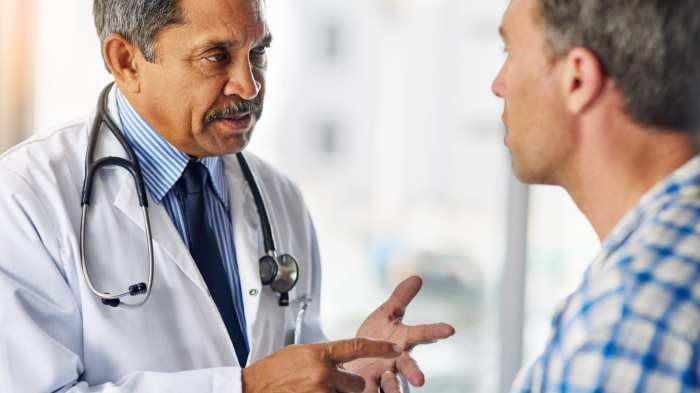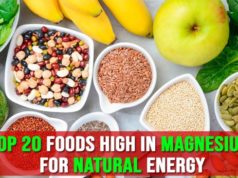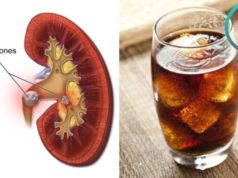Best diet with gallstones is a crucial topic for those dealing with this condition. Gallstones, formed by hardened cholesterol or bilirubin in the gallbladder, can cause significant discomfort and potential complications. Understanding the relationship between diet and gallstone formation is key to managing this health concern. A balanced and nutritious diet can significantly contribute to preventing gallstone formation, reducing symptoms, and promoting overall well-being.
This comprehensive guide explores the intricate connection between diet and gallstones, providing valuable insights into the foods to consume and avoid. We delve into the science behind gallstone formation, discuss dietary factors that influence their development, and offer a tailored diet plan designed to support your health journey. We also address lifestyle modifications and medical treatments that can play a significant role in managing gallstones effectively.
Understanding Gallstones

Gallstones are hard deposits that form in the gallbladder, a small, pear-shaped organ located beneath the liver. They are a common health problem, affecting millions of people worldwide.
Formation of Gallstones
Gallstones form when cholesterol, bilirubin, and other substances in bile harden and crystallize. Bile is a fluid produced by the liver that helps digest fats. It is stored in the gallbladder and released into the small intestine when needed. There are two main types of gallstones:
- Cholesterol gallstones: These are the most common type and are made up mostly of cholesterol. They form when there is too much cholesterol in the bile and not enough bile salts to dissolve it.
- Pigment gallstones: These are less common and are made up of bilirubin, a waste product from the breakdown of red blood cells. They form when there is too much bilirubin in the bile.
Symptoms of Gallstones
Many people with gallstones have no symptoms. However, if the gallstones block the cystic duct, which connects the gallbladder to the common bile duct, symptoms can develop. These symptoms may include:
- Sudden, severe pain in the upper right abdomen that may radiate to the back or right shoulder.
- Nausea and vomiting.
- Fever.
- Jaundice (yellowing of the skin and whites of the eyes).
Risks and Complications of Untreated Gallstones
Untreated gallstones can lead to several complications, including:
- Cholecystitis: This is an inflammation of the gallbladder that can occur when a gallstone blocks the cystic duct. It can cause severe pain, fever, and nausea.
- Acute pancreatitis: This is an inflammation of the pancreas that can occur when a gallstone blocks the common bile duct. It can cause severe abdominal pain, nausea, and vomiting.
- Biliary colic: This is a type of pain that occurs when a gallstone blocks the cystic duct. It is usually a sudden, intense pain that lasts for several hours.
- Gallbladder cancer: While rare, gallstones can increase the risk of gallbladder cancer.
Diet and Gallstones: Best Diet With Gallstones
Your diet plays a crucial role in the formation and management of gallstones. While genetics and other factors contribute, understanding the connection between diet and gallstones can help you make informed choices to prevent or manage them.
Dietary Factors Contributing to Gallstones
The connection between diet and gallstones is multifaceted. Certain dietary components can influence the composition of bile, increasing the risk of gallstone formation.
- High Fat Intake: A diet high in saturated and trans fats, often found in red meat, processed foods, and fried foods, can contribute to gallstone formation. These fats can increase the cholesterol content in bile, making it more likely to solidify into gallstones.
- Rapid Weight Loss: Sudden and significant weight loss can disrupt the balance of bile acids, increasing the risk of gallstone formation. This is because rapid weight loss can lead to a decrease in bile acid production, which can contribute to the formation of gallstones.
- Low Fiber Intake: Fiber, particularly soluble fiber found in fruits, vegetables, and whole grains, can help regulate bile acid production and prevent the formation of gallstones. A diet low in fiber can contribute to a more concentrated bile, increasing the risk of gallstones.
- High Cholesterol Intake: A diet rich in cholesterol can increase the amount of cholesterol in bile, making it more likely to crystallize and form gallstones.
Foods to Avoid or Limit
While individual dietary needs may vary, here is a comprehensive list of foods to avoid or limit when managing gallstones:
- Fatty Meats: Red meat, fatty cuts of pork, and processed meats like sausages and bacon are high in saturated fats and cholesterol, which can contribute to gallstone formation.
- Fried Foods: Fried foods are often high in unhealthy fats and can contribute to the formation of gallstones. Opt for healthier cooking methods like baking, grilling, or steaming.
- Processed Foods: Processed foods, such as packaged snacks, fast food, and frozen meals, are often high in saturated fats, trans fats, and cholesterol, making them less ideal for managing gallstones.
- Egg Yolks: Egg yolks are high in cholesterol and should be consumed in moderation. Opt for egg whites instead.
- Full-Fat Dairy Products: Full-fat dairy products, like whole milk, butter, and cream cheese, are high in saturated fats and can contribute to gallstone formation. Choose low-fat or fat-free alternatives.
- Sugary Drinks: Sugary drinks, such as soda, juice, and sweetened tea, provide empty calories and can contribute to weight gain, increasing the risk of gallstones.
Best Diet for Gallstones
A healthy diet is crucial for managing gallstones and preventing their recurrence. This section will discuss a balanced and nutritious diet plan specifically designed for individuals with gallstones.
Diet Plan for Gallstones
The goal of a gallstone-friendly diet is to promote healthy digestion, reduce inflammation, and minimize the risk of stone formation. This plan includes a variety of foods that are low in fat, cholesterol, and fiber, while also being rich in nutrients.
Breakfast
A healthy breakfast sets the tone for the day. Here are some options:
- Oatmeal with berries and a drizzle of honey: Oatmeal is a good source of soluble fiber, which can help regulate cholesterol levels. Berries are rich in antioxidants and low in fat. Honey can be used as a natural sweetener.
- Scrambled eggs with whole-wheat toast: Eggs are a good source of protein and essential nutrients. Whole-wheat toast provides fiber and complex carbohydrates.
- Yogurt with fruit and granola: Yogurt is a good source of calcium and probiotics, which can promote gut health. Fruit provides vitamins and minerals, and granola adds a bit of crunch and fiber.
Lunch
Lunch should be light and easy to digest. Consider these options:
- Grilled chicken salad with mixed greens, tomatoes, and a light vinaigrette: Chicken is a lean protein source, and mixed greens provide vitamins and minerals. Tomatoes are rich in lycopene, an antioxidant. A light vinaigrette can be made with olive oil and lemon juice.
- Tuna salad sandwich on whole-wheat bread: Tuna is a good source of protein and omega-3 fatty acids. Whole-wheat bread provides fiber and complex carbohydrates.
- Vegetable soup with a side of whole-grain crackers: Vegetable soup is a good source of vitamins, minerals, and fiber. Whole-grain crackers provide a source of complex carbohydrates.
Dinner
Dinner should be a balanced meal with lean protein, vegetables, and a small amount of healthy fats. Here are some ideas:
- Baked salmon with roasted vegetables: Salmon is a good source of omega-3 fatty acids and protein. Roasted vegetables provide vitamins, minerals, and fiber.
- Chicken stir-fry with brown rice: Chicken is a lean protein source, and vegetables provide vitamins, minerals, and fiber. Brown rice is a good source of complex carbohydrates.
- Lentil soup with whole-wheat bread: Lentil soup is a good source of protein, fiber, and iron. Whole-wheat bread provides a source of complex carbohydrates.
Snacks
Snacks can help keep you feeling full and prevent overeating at meals. Here are some healthy snack options:
- Fruit: Apples, bananas, oranges, and berries are all good sources of vitamins, minerals, and fiber.
- Vegetables: Carrots, celery, and cucumbers are low in calories and rich in nutrients.
- Plain yogurt: Yogurt is a good source of calcium and probiotics, which can promote gut health.
- Nuts and seeds: Almonds, walnuts, and sunflower seeds are good sources of healthy fats, protein, and fiber.
Recipes for a Gallstone-Friendly Diet
Here are some specific recipes that are suitable for a gallstone-friendly diet:
Oatmeal with Berries and Honey
Ingredients:
- 1/2 cup rolled oats
- 1 cup water
- 1/4 cup berries (blueberries, raspberries, or strawberries)
- 1 tablespoon honey
Instructions:
- Combine oats and water in a saucepan.
- Bring to a boil, then reduce heat and simmer for 5 minutes, stirring occasionally.
- Top with berries and honey.
Grilled Chicken Salad with Mixed Greens
Ingredients:
- 1 grilled chicken breast, sliced
- 1 cup mixed greens
- 1/2 cup chopped tomatoes
- 1/4 cup red onion, thinly sliced
- 2 tablespoons light vinaigrette
Instructions:
- Combine mixed greens, tomatoes, and red onion in a salad bowl.
- Top with grilled chicken breast.
- Drizzle with light vinaigrette.
Baked Salmon with Roasted Vegetables
Ingredients:
- 1 salmon fillet
- 1 cup broccoli florets
- 1/2 cup sliced carrots
- 1/4 cup olive oil
- Salt and pepper to taste
Instructions:
- Preheat oven to 400 degrees F (200 degrees C).
- Toss broccoli and carrots with olive oil, salt, and pepper.
- Spread vegetables in a baking dish.
- Place salmon fillet on top of vegetables.
- Bake for 15-20 minutes, or until salmon is cooked through.
Nutritional Considerations
Making dietary changes is crucial for managing gallstones, and these adjustments go beyond simply avoiding fatty foods. This section delves into the importance of hydration, fiber, and antioxidants in promoting digestive health and preventing gallstone formation.
Hydration
Staying hydrated is essential for overall health, and it plays a crucial role in managing gallstones. When you’re adequately hydrated, your body can more effectively flush out waste products, including bile, which can help prevent gallstone formation.
- Adequate Water Intake: Aim for at least 8 glasses of water daily, and more if you’re physically active or live in a hot climate.
- Other Fluids: Besides water, other healthy fluids like herbal teas, fruit juices diluted with water, and vegetable broth can contribute to your daily fluid intake.
Fiber
Dietary fiber is a type of carbohydrate that the body can’t digest. It’s found in plant-based foods like fruits, vegetables, and whole grains. Fiber plays a significant role in promoting digestive health and preventing gallstones.
- Promoting Regular Bowel Movements: Fiber helps regulate bowel movements, preventing constipation. This is important because constipation can increase the risk of gallstone formation.
- Binding to Cholesterol: Fiber binds to cholesterol in the digestive tract, preventing it from being absorbed into the bloodstream. This is crucial because cholesterol is a major component of gallstones.
Antioxidants and Anti-inflammatory Foods
Antioxidants and anti-inflammatory foods are vital for overall health and can play a role in preventing gallstones. They help combat oxidative stress and inflammation, both of which can contribute to gallstone formation.
- Antioxidant-Rich Foods: Include foods rich in antioxidants, such as berries, dark leafy greens, citrus fruits, and nuts, in your diet. These foods contain vitamins and minerals that protect cells from damage caused by free radicals.
- Anti-inflammatory Foods: Incorporate anti-inflammatory foods like fatty fish, olive oil, turmeric, and ginger into your meals. These foods contain compounds that help reduce inflammation throughout the body.
Lifestyle Modifications
Beyond dietary changes, incorporating lifestyle modifications can significantly enhance your overall well-being and contribute to preventing gallstones. These changes complement a gallstone-friendly diet and promote a healthier lifestyle.
Regular Physical Activity, Best diet with gallstones
Regular physical activity plays a crucial role in preventing gallstones. It helps regulate cholesterol levels, promotes weight management, and encourages bile flow.
- Aim for at least 150 minutes of moderate-intensity aerobic activity or 75 minutes of vigorous-intensity aerobic activity per week, spread across at least three days.
- Examples of moderate-intensity activities include brisk walking, cycling, swimming, and dancing.
- Vigorous-intensity activities include running, jogging, and high-impact aerobics.
Stress Management
Chronic stress can negatively impact your overall health, including your risk of developing gallstones. Stress triggers the release of hormones that can affect bile flow and increase cholesterol levels.
- Engage in stress-reducing techniques like yoga, meditation, deep breathing exercises, or spending time in nature.
- Prioritize sleep and aim for 7-8 hours of quality sleep each night.
- Practice relaxation techniques like progressive muscle relaxation or mindfulness.
Medical Management
Managing gallstones often involves a combination of lifestyle changes, medications, and surgical procedures. The best approach depends on the severity of your symptoms, the size and number of gallstones, and your overall health.
Medication
Medications are typically used to dissolve gallstones or manage symptoms.
- Ursodeoxycholic acid (UDCA): This medication helps dissolve small, cholesterol-based gallstones. It’s most effective in people with mild symptoms and stones less than 15 millimeters in diameter. However, UDCA can take months or years to work, and it may not be effective for everyone.
- Pain relievers: Over-the-counter pain relievers, such as ibuprofen or acetaminophen, can help manage pain associated with gallstones.
Surgery
If medications are ineffective or your symptoms are severe, surgery may be necessary.
- Laparoscopic cholecystectomy: This is the most common procedure for gallstones. It involves removing the gallbladder through a few small incisions in the abdomen. This minimally invasive technique is generally safe and has a quick recovery time.
- Open cholecystectomy: This procedure involves making a larger incision in the abdomen to remove the gallbladder. It’s typically used in cases where laparoscopic surgery is not possible, such as if there’s a lot of scar tissue or inflammation in the abdomen.
Comparing Treatment Options
| Treatment | Effectiveness | Risks |
|---|---|---|
| UDCA | Effective for small, cholesterol-based gallstones, but may take months or years to work | Diarrhea, abdominal pain, liver damage (rare) |
| Laparoscopic cholecystectomy | Highly effective in removing gallstones and preventing future complications | Bleeding, infection, bile duct injury (rare) |
| Open cholecystectomy | Effective in removing gallstones, but has a longer recovery time | Bleeding, infection, bile duct injury (rare) |
Importance of Consulting a Healthcare Professional
It’s crucial to consult a healthcare professional for personalized advice on managing gallstones. They can assess your individual situation, recommend the most appropriate treatment options, and monitor your progress.
Final Review
By understanding the complexities of gallstone formation and adopting a tailored approach that encompasses diet, lifestyle, and medical management, individuals can effectively manage this condition. The information presented in this guide serves as a valuable resource for navigating the challenges of living with gallstones. Remember, consulting with a healthcare professional is essential for personalized advice and treatment options. By taking a proactive approach to your health, you can empower yourself to live a fulfilling life, free from the discomfort and complications associated with gallstones.
FAQ Corner
What are the most common symptoms of gallstones?
The most common symptom of gallstones is pain in the upper right abdomen, often after eating fatty foods. Other symptoms include nausea, vomiting, fever, and jaundice.
What foods should I avoid if I have gallstones?
Foods high in saturated fat, cholesterol, and refined carbohydrates should be avoided. These include red meat, processed foods, fried foods, and sugary drinks.
Can exercise help with gallstones?
Yes, regular exercise can help maintain a healthy weight, which can reduce the risk of developing gallstones. It can also improve overall digestive health.
What are the different treatment options for gallstones?
Treatment options include medication to dissolve gallstones, minimally invasive surgery to remove the gallbladder, and lifestyle changes such as diet and exercise.
A gallbladder-friendly diet focuses on low-fat, fiber-rich foods. While avoiding fatty foods is crucial, you might wonder if diet soda is a suitable alternative, especially if you’re aiming for weight loss. Is diet soda bad for weight loss ?
Regardless of the answer, remember that a healthy diet for gallstones should be balanced and individualized, consulting with a healthcare professional for personalized guidance.
A low-fat diet is often recommended for people with gallstones, as it helps reduce the risk of further complications. This can sometimes be a challenge, as many people enjoy fatty foods. It’s important to consult with a doctor or nutritionist to create a personalized plan that fits your individual needs.
You might be wondering if this type of diet is similar to what’s recommended for cats, and if so, whether is Science Diet good for cats. While feline diets are different, understanding the nutritional needs of both humans and animals can be helpful when making dietary choices.
A diet for gallstones often emphasizes low-fat foods, but it’s still important to get enough protein. This can be tricky, but there are plenty of lean protein sources to incorporate, like fish, chicken breast, and beans. If you’re struggling to meet your protein needs, you can check out this guide on how to get more protein in your diet.
Ultimately, focusing on a balanced diet with adequate protein while minimizing fat intake is key to managing gallstones.
























